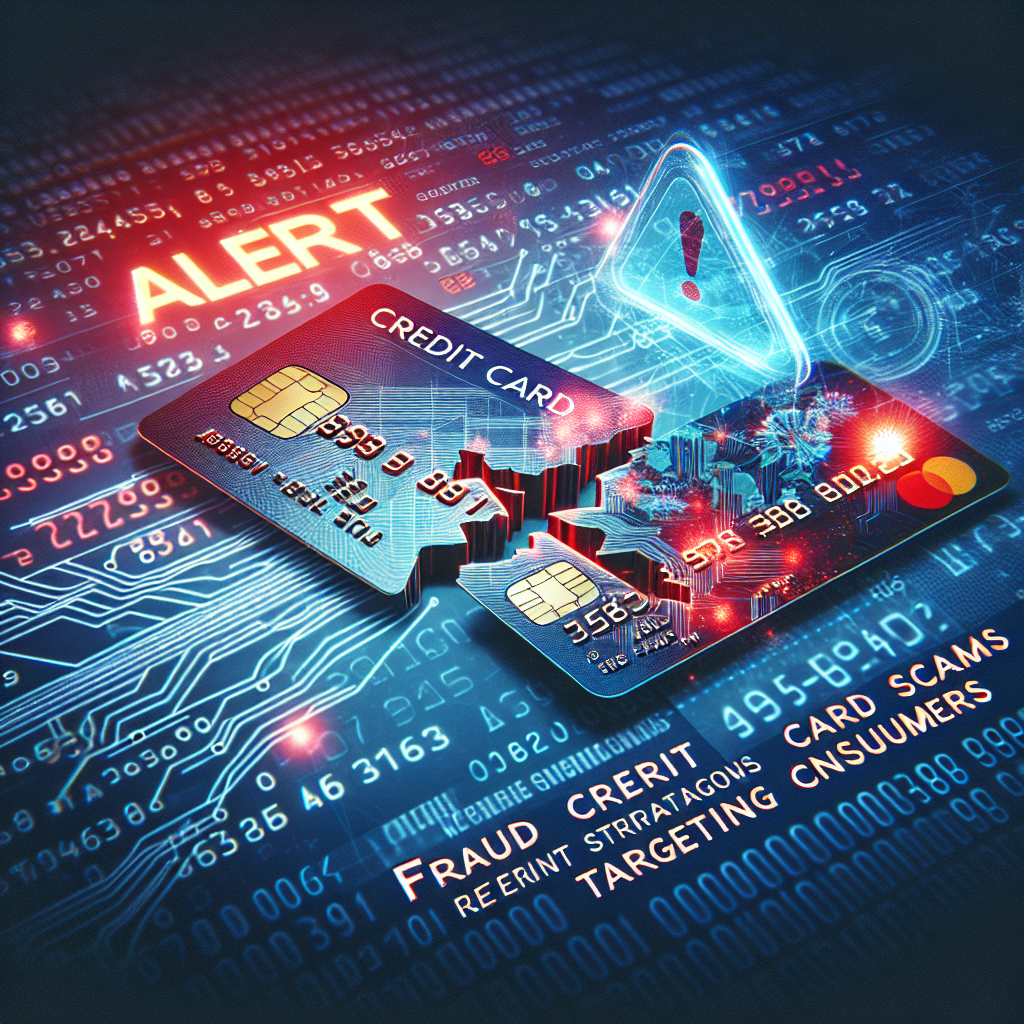
Fraud Alert: Recent Credit Card Scams Targeting Consumers
As a typical New Yorker will tell you, you gotta keep your eyes peeled in this city. Whether you’re navigating the chaos of Times Square or just ordering your morning coffee, fraudsters are constantly lurking around, waiting for you to let your guard down. So, let’s talk about something that’s got everyone a bit on edge: the rampant credit card scams targeting consumers. Trust me, you’ll want to know every detail about this.
Contents
- 1 Introduction to Recent Credit Card Scams
- 2 What’s the Deal with Recent Scams?
- 3 Recent Trends in Credit Card Fraud
- 4 Why Are Scammers Targeting Credit Card Users?
- 5 What Makes These Scams So Effective?
- 6 Questions You Should Be Asking About Credit Card Scams
- 7 How to Protect Yourself from Credit Card Scams
- 8 The Future of Credit Card Security
- 9 Final Thoughts
Introduction to Recent Credit Card Scams
Ah, credit cards. They’re supposed to make life easier, right? But lately, it seems like every time you swipe, some scammer’s got their eye on you. The Federal Trade Commission has already been waving the red flag with regards to credit card fraud. Seems like everyone’s got a story these days. Whether it’s unauthorized charges or elaborate phishing schemes, the threat feels closer than ever.
What’s the Deal with Recent Scams?
Fraudsters have been getting creative. From pretending to be your bank to those robocalls claiming you’ve won something, these scams are sophisticated and convincing. Here are a few of the tricks they’re using:
-
Phishing Emails: You know the ones. They look like they’re from your bank or a trusted retailer. One wrong click and bam, they’re in.
-
Skimmers and Shimmers: Devices that capture card info at ATMs or gas stations. It’s almost like something out of a spy movie.
- Fake Merchant Websites: Too-good-to-be-true deals that’ll lure you in, but never deliver.
Recent Trends in Credit Card Fraud
In the last few months, experts have spotted some disturbing new trends:
-
Contactless Payment Scams: Fraudsters exploiting NFC technology used in tap-to-pay systems.
- Synthetic Identity Fraud: Creating fake identities using a mix of real and fabricated information.
Check out this data table that breaks down these trends:
| Fraud Type | Description | How to Protect Yourself |
|---|---|---|
| Phishing Emails | Scammers masquerading as trusted contacts to steal personal information. | Verify the sender and never click on suspicious links. |
| Skimmers and Shimmers | Devices that capture card data inserted into payment terminals. | Regularly check transaction history and use secure ATMs. |
| Fake Merchant Websites | Fraudulent websites designed to steal payment info while offering fake products. | Shop only from reputable sites with HTTPS in the URL. |
| Contactless Payment | Illicit access to NFC data from tap-to-pay transactions. | Use RFID sleeves for contactless cards. |
| Synthetic Identity Fraud | Using real and fake info to create new identities for financial fraud. | Monitor your credit report for unrecognized names or cards. |
Why Are Scammers Targeting Credit Card Users?
It’s a valid question, but the answer’s pretty straightforward. Credit cards are quick cash magnets. Scammers can make transactions anywhere in the world instantly. Plus, your credit card‘s info is easy to sell on the dark web. Creative criminal minds are always finding ways to exploit our trust and technology.
What Makes These Scams So Effective?
Let’s be real—you can’t let your guard down for a second because:
-
High Tech Means: Scammers are using more sophisticated technology than ever.
-
Psychological Tactics: They prey on emotions—excitement, worry, urgency.
- Continuous Evolution: Every day there’s a new scheme. Stay ahead or risk getting left behind.
Questions You Should Be Asking About Credit Card Scams
How can I spot a phishing scam email?
Phishing emails are a nightmare. They mimic legitimate companies—logos, language, the whole nine yards. Start by checking the email address; if it looks off, it probably is. Hover over any links without clicking. If the address doesn’t match, run for the hills.
What’s the best way to protect myself from skimmers?
Simple—stick to secure ATMs inside bank lobbies. They’re much safer than standalone ATMs. Before swiping, give the card reader a jiggle. If it feels loose, trust your gut and walk away. Better safe than sorry, my friend.
Can reward points and loyalty programs be a scam?
Ah, the allure of free stuff. It’s what gets most people. If the deal feels too good to be true, it’s likely a scam. Always verify directly through the company’s official website or customer service. Don’t let an email trick you into whooping for joy prematurely.
How to Protect Yourself from Credit Card Scams
The best offense is a good defense, right? Here are some quick tips:
-
Regular Checks: Go through your bank statements like a hawk. Spot any fishy transactions, and notify your bank ASAP.
-
Use Multi-Factor Authentication: Set it up on all your financial accounts. Annoying? Maybe. But worth every minute spent.
- Educate Friends and Family: Be the hero. Share information and keep the people around you informed and less vulnerable.
The Future of Credit Card Security
Riding the train? Stuck in traffic? Consider this: new tech like biometric verifications could be game-changers. And yeah, more regulations are on the horizon. You can’t afford to not keep up with these developments.
Final Thoughts
Credit card scams are a drag—plain and simple. But don’t just sit there, do something about it. Arm yourself with knowledge. Stay vigilant. Question everything. And above all, keep your identity secure like it’s a slice at your favorite pizza spot.
Are you concerned about long-term financial security? Don’t let scams derail your life. Stay safe, make wise choices, and keep your finances in check.






